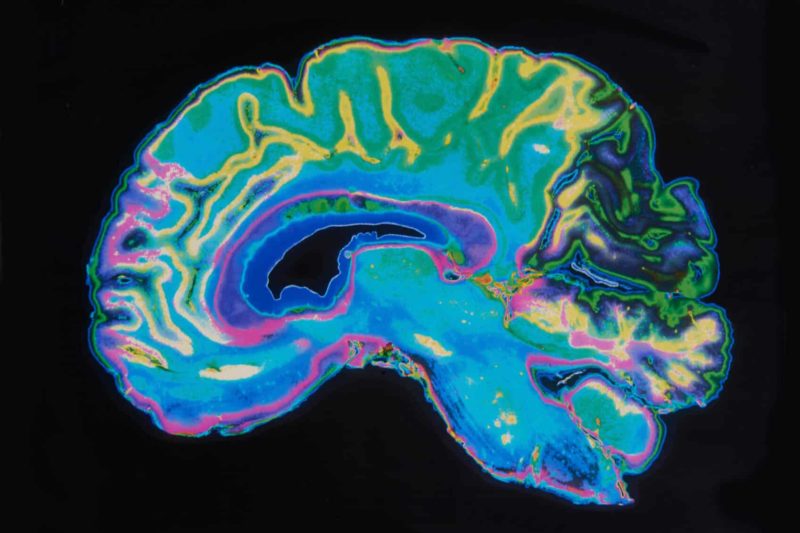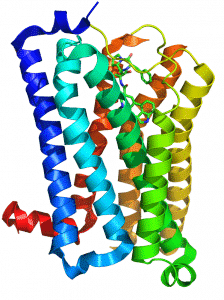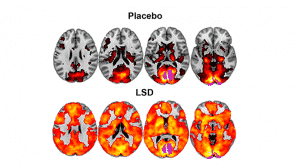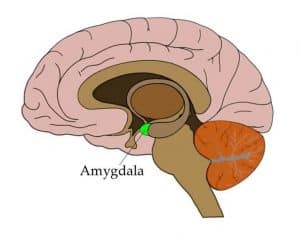
How LSD Affects The Brain
People have been using LSD for decades, but we still don’t know all that much about it, especially when it comes to how understanding how LSD affects the brain. While research indicates that LSD doesn’t kill brain cells, it has a multitude of other effects.
LSD Affects The Brain in Multiple Ways
Protein Structure Influences How LSD Affects The Brain

LSD (Lysergic acid diethylamide) alters perception, thoughts and feelings while causing hallucinations, which may last many hours, long after LSD clears the bloodstream. LSD induces these experiences by interacting with the 5-HT2AR serotonin receptors, proteins on the surface of brain cells. Serotonin is a chemical brain cells use to communicate.
Serotonin receptors activate 2 major signaling pathways within cells through:
- G-proteins
- β-arrestins.
Research indicates that LSD binds to the receptor in such a way that causes it to act mainly through the β-arrestin pathway instead of the G-protein pathway. It appears that the serotonin receptor closes a “lid” over the LSD molecule, preventing it from quickly detaching, likely explaining the drug’s long-lasting effects. .
Researcher said that studying the mechanism of psychoactive drug action, including how certain drugs activate one signaling pathway inside cells while avoiding another and provides a proof-of-concept for the design of future drugs that have fewer undesired side-effects.
LSD And Brain Communication

LSD researchers at the Beckley/Imperial Research Programme used brain imaging technology in an attempt to demonstrate the mechanisms behind LSD’s subjective experiences, such as hallucinations or ego-death. Research demonstrates how LSD decreases communication between the coordinated areas of the brain that work together to modulated and repress consciousness, this coordinated network of regions, known as the Default Mode Network (DMN), monitors and controls the volume of sensory information that we become aware of. LSD was found to decrease activity in DMN-centered regions of the brain, driving more communication between normally segregated brain networks, producing a brain-wide pattern of connectivity and more fluid cognitive modes. The magnitude of the effect seems to correlate to the strength of the ‘ego-death’ experience and how much the user professes to have an increased sense of oneness/unity.
The research involved 20 volunteers who were each administered either 75 micrograms of LSD or placebo before having their brains scanned using various techniques including fMRI and magnetoencephalography (MEG).
The brain scans showed how the brain’s visual cortex, which normally receives and processes information from the eyes, begins to communicate with a wide range of other brain regions under the effects of LSD, indicating regions of the brain not normally involved in vision suddenly contribute to visual processing, explaining why people tend to experience dreamlike hallucinations when they use the drug.
Dr. Robin Carhart-Harris, one of the researchers, explained that this effect on the brain underpins the widely-cited experience of ‘ego death’, in that one’s sense of themselves is temporarily overcome by a sense of external belonging. It’s believed that this same phenomena is also behind the perceived spiritual nature of the experience, and is the reason that the positive effects experienced by the user continue long after their trip, as their brain chemistry and connections have been altered.
LSD and Amygdala Functioning

Researchers at the University Psychiatric Clinics (UPK) and the Department of Pharmacology and Toxicology at the University Hospital Basel (USB) measured the brain activity of 20 healthy people after taking 100 micrograms of LSD and showing them images of faces portraying different emotional states such as anger, joy or fear.
Researchers found that the depiction of fear under LSD led to lower level of amygdala activity, the area of the brain that processes emotions and could explain some of the changes in emotional experience that occur after taking hallucinogens. The researchers also found the lower the LSD-induced amygdala activity of a subject, the higher the subjective effect of the drug.
Want To Dive Deeper With LSD?
Be sure to read our other articles on LSD:
- LSD Medical Trials? Meet ‘Rick’, He Trips For Science
- What is The Difference Between Acid and Shrooms
- LSD for Mental Health
- How to Test LSD
- Conditions That Might Benefit From LSD Therapy

Comments